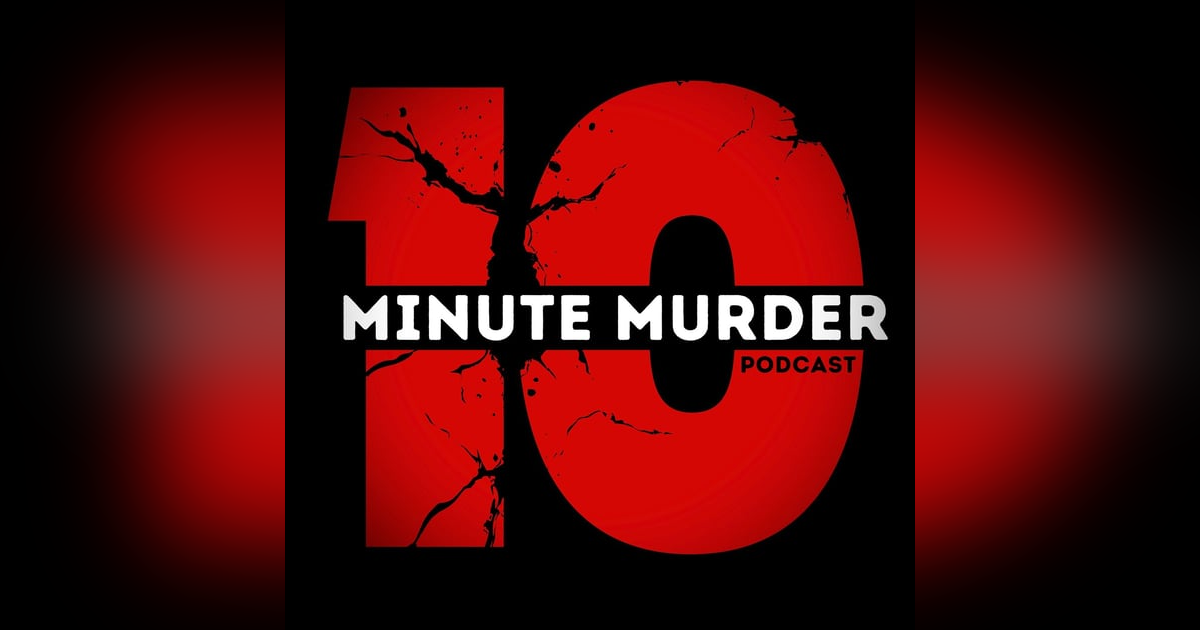The Dark Side of Misinformation: Violent Crimes Inspired by Conspiracy Theories

Conspiracy theories have been around forever. From secret societies pulling strings behind the scenes to government cover-ups, people have always loved a good hidden truth. But thanks to the internet, these theories have evolved from whispered suspicions into roaring online movements with real power, and, in some cases, deadly consequences.
This isn’t just about harmless fringe beliefs. When false narratives take hold, they can push people over the edge, inspiring violent acts that shock the world. From lone shooters to mob riots, the line between belief and brutality can get dangerously thin. This blog dives into how conspiracy theories transform from ideas into violent actions, why they spread so fast, and what it means for all of us.
The Anatomy of a Conspiracy Theory
What makes a conspiracy theory a conspiracy theory? At its core, it’s a belief that powerful forces are secretly manipulating events for their own gain, often at the expense of “ordinary people.” The theory usually depends on an “us versus them” narrative—a small group of elites versus the masses.
Psychology plays a huge role here. Humans crave control and understanding, especially when life feels chaotic or unfair. Conspiracy theories offer neat explanations for complicated problems, even if those explanations aren’t true. They tap into cognitive biases like confirmation bias… where people only see what supports their existing beliefs, and pattern recognition, even when there’s no real pattern.
Another key factor is social identity. Believing in a conspiracy can create a sense of belonging to a select group that “knows the truth,” which feels empowering. This shared identity can make followers defensive against outsiders who challenge their beliefs.
Distrust in institutions, government, media, science… also fuels conspiracies. When people feel these institutions have failed them or lied to them before, they become fertile ground for alternative explanations, no matter how outlandish.
Put all these elements together and you have a formula for ideas that spread fast, stick stubbornly, and sometimes spiral into dangerous territory.
Radicalization Pathways: From Belief to Violence
Believing a conspiracy theory is one thing. Turning that belief into violent action is another. For some, the journey from skeptical curiosity to deadly extremism happens faster and more insidiously than most realize.
The internet plays a major role in this transformation. Online forums, social media groups, and video platforms create echo chambers where fringe ideas are not just shared but amplified. People can quickly go from reading a single conspiracy post to spending hours immersed in content that ratchets up fear, anger, and distrust. Algorithms designed to keep users engaged do not discriminate. They push more extreme material because it gets clicks, comments, and shares.
In these virtual echo chambers, the “us versus them” mentality hardens. Followers begin to see outsiders not just as skeptics but as enemies or part of the conspiracy itself. This mindset breeds paranoia and justifies increasingly radical views, including the idea that violence is a necessary response to a corrupt system.
Rhetoric in these spaces often frames violence as defense or liberation. Phrases like “fighting back,” “taking the truth by force,” or “waking up” can serve as dog whistles encouraging action. Over time, the line between metaphorical resistance and literal violence blurs.
Real-world examples show how these radicalization pathways play out. Some violent perpetrators have documented their descent online, posting manifestos, livestreaming attacks, or rallying support in niche communities beforehand. Their violence is not random. It is often a carefully planned statement meant to inspire others or enact “justice” as defined by their warped worldview.
Understanding how online radicalization works is critical if we want to stop conspiracy-fueled violence before it starts. It means recognizing that belief alone is not the problem. It is how those beliefs are nurtured, amplified, and weaponized in digital spaces.
Notorious Violent Incidents Linked to Conspiracies
Several violent events have been directly linked to conspiracy theories, showing how dangerous false beliefs can become when taken to extremes.
Take the Pizzagate shooting in 2016. A man fired shots inside a Washington, D.C. pizza restaurant after being convinced it was the center of a child trafficking ring led by political elites. The entire theory was baseless, yet it inspired real-world violence. This case revealed how conspiracy theories could turn someone’s paranoia into dangerous action.
Another major event was the January 6, 2021, Capitol riot. Fueled by false claims of election fraud and other conspiracies, thousands stormed the U.S. Capitol in an attempt to overturn the election results. This insurrection was a stark example of how conspiracy-fueled rage can threaten democracy and public safety on a massive scale.
Other violent acts, like the Oklahoma City bombing in 1995 or threats linked to QAnon believers, further demonstrate the deadly potential of conspiracies. While the motivations and scale vary, a common thread is the belief that violent resistance is justified against an enemy seen as corrupt or oppressive.
Looking across these incidents, patterns emerge. The perpetrators often feel disenfranchised or threatened by social and political changes. They embrace conspiracies that provide simple answers and identify clear villains. These beliefs justify their actions and give them a sense of purpose.
Understanding these connections is vital. It helps society grasp how false beliefs can spiral into violence and why confronting conspiracy theories is more than a matter of correcting misinformation. It is a public safety concern that requires serious attention.
Cultural and Social Impact
Conspiracy-fueled violence doesn’t just harm individuals; it reverberates through society, shaping public discourse and challenging our shared values.
One major effect is how these violent acts influence media coverage and public perception. Sensational headlines and constant repetition can normalize extreme beliefs, making conspiracies seem more widespread or credible than they really are. This normalization can encourage new followers and deepen societal divides.
The spread of conspiracy theories also strains trust in institutions like the government, media, and scientific community. When large groups reject expert knowledge and official narratives, it becomes harder to address real problems collectively. This erosion of trust fuels further polarization and instability.
Marginalized communities often bear the brunt of conspiracy-driven violence and rhetoric. Targeted misinformation can inflame existing prejudices, leading to harassment or attacks. The social fabric frays when fear and suspicion replace understanding and dialogue.
Media and social platforms face tough choices. They must balance free speech rights with the need to curb harmful content. Responsible coverage means avoiding amplification of falsehoods while informing the public. Moderation policies must evolve to tackle coded language and hidden networks that spread dangerous conspiracies.
Ultimately, conspiracy-driven violence challenges the very foundations of a shared reality and mutual trust necessary for a functioning society. Addressing this impact requires coordinated efforts across media, education, and policy.
Prevention and Intervention
Stopping conspiracy-fueled violence requires more than just debunking false claims. It calls for a broad strategy that tackles the root causes and the environments where radicalization happens.
Education plays a key role. Teaching critical thinking and media literacy from a young age helps people recognize misinformation and resist manipulative narratives. Encouraging curiosity paired with healthy skepticism can make a real difference.
Online platforms must improve how they identify and limit harmful content. This includes better detection of coded language and coordinated misinformation campaigns. Collaboration between tech companies, researchers, and mental health experts can develop smarter tools to flag risky behavior before it escalates.
Community initiatives focused on early intervention can help at-risk individuals before they turn to violence. Programs that provide social support, mental health resources, and alternatives to extremist groups are crucial. De-radicalization efforts must be compassionate and nuanced, understanding the underlying issues without excusing harmful actions.
Balancing free speech with public safety is difficult but necessary. Clear guidelines, transparency, and accountability from platforms and policymakers can build trust and effectiveness.
Ultimately, preventing violence inspired by conspiracies demands vigilance, cooperation, and a commitment to fostering a society grounded in facts and empathy.
Conclusion
Conspiracy theories are more than just strange ideas floating online. When left unchecked, they can become dangerous forces that inspire real violence and threaten the safety of communities. From isolated incidents to large-scale attacks, false beliefs have shown their deadly potential time and again.
Understanding how conspiracy theories spread, how they radicalize individuals, and the cultural impact they create is critical. It forces us to confront uncomfortable truths about distrust, social division, and the power of misinformation in the digital age.
Preventing future violence means more than fact-checking. It requires education, better online moderation, mental health support, and a willingness to engage with people before their frustration turns to rage. It means building a society where truth and empathy stand stronger than fear and falsehood.
The threat posed by conspiracy-fueled violence is real, but it is not inevitable. By recognizing the warning signs and working together, we can break the cycle and protect the future.









